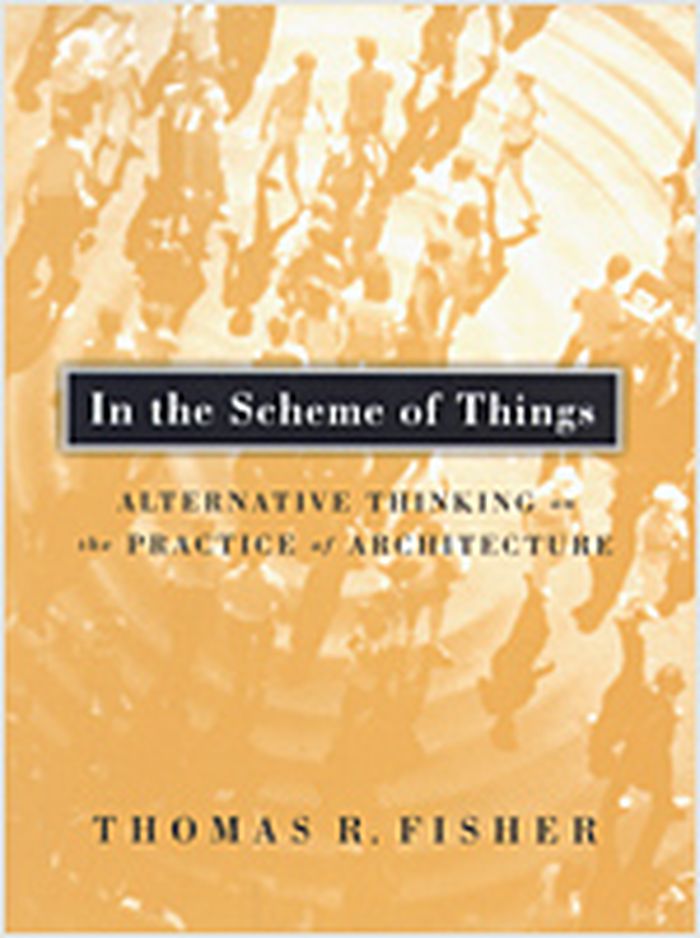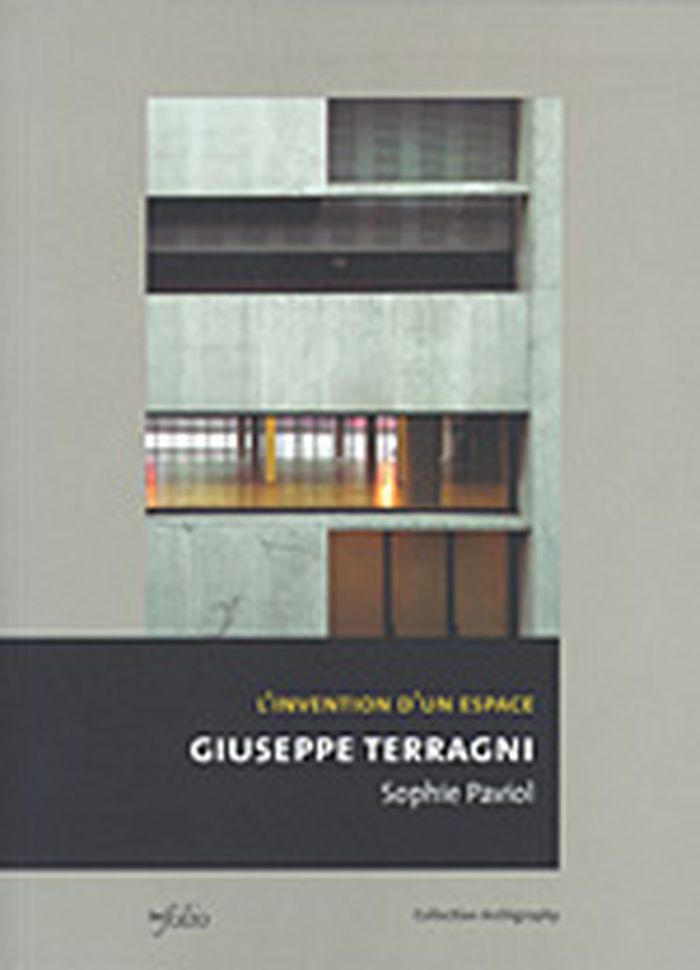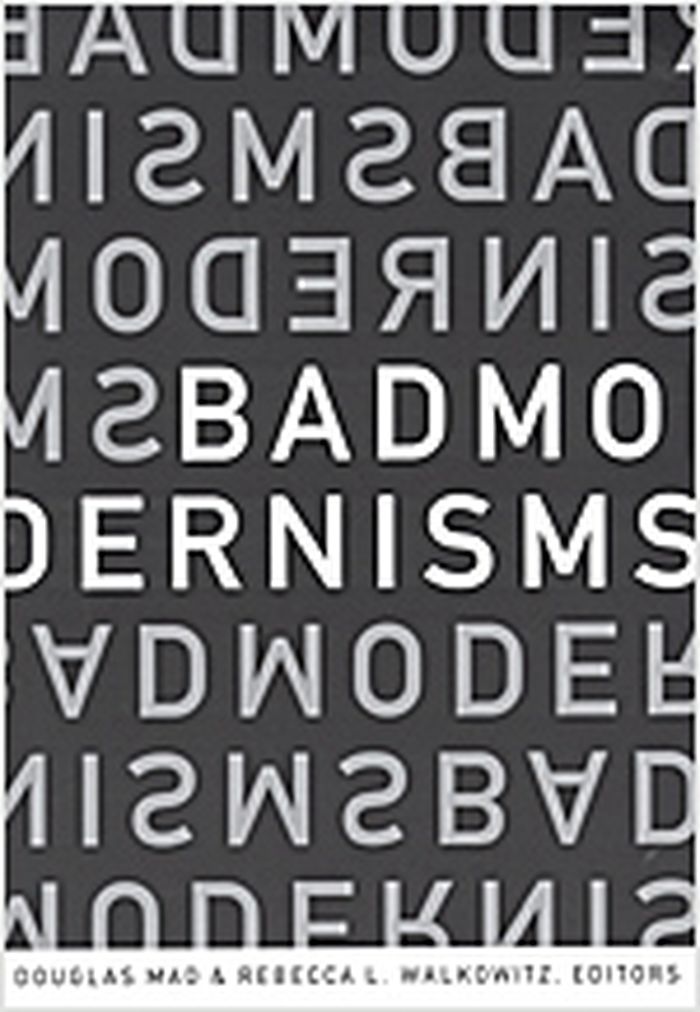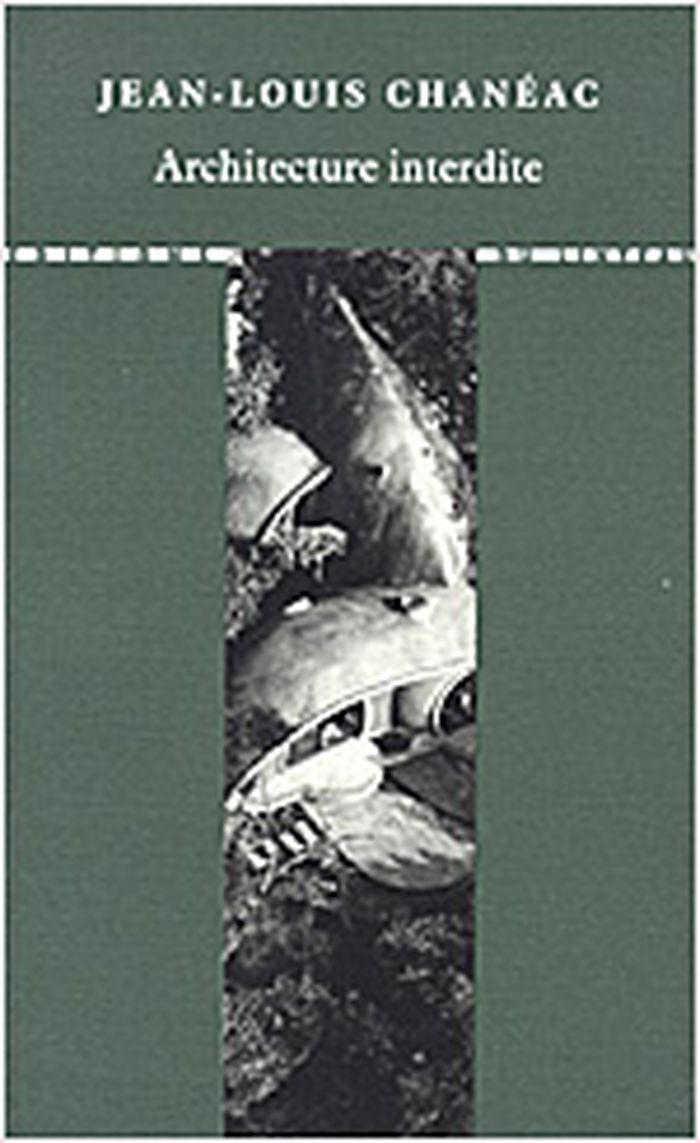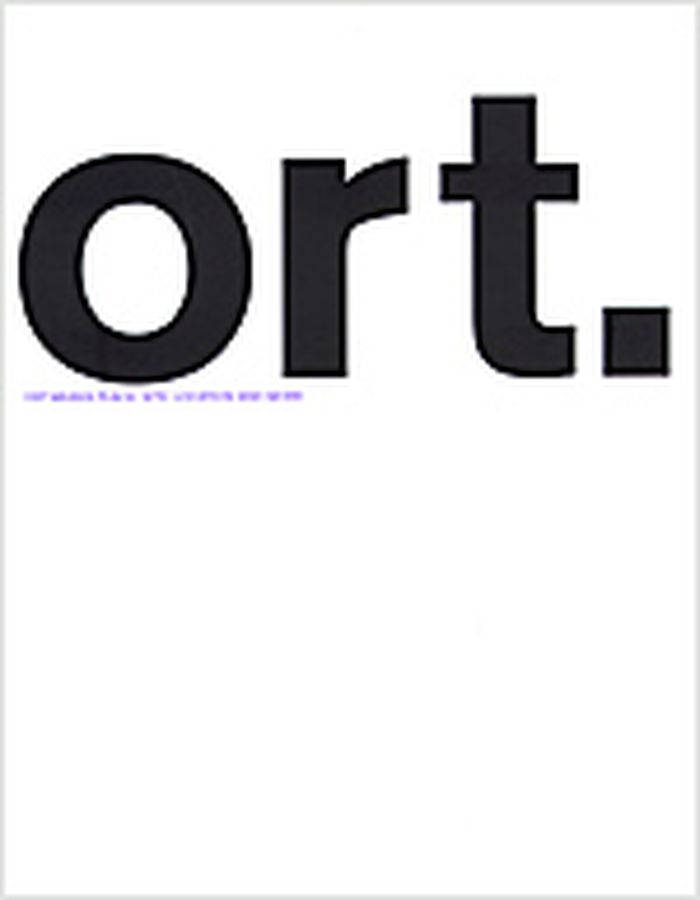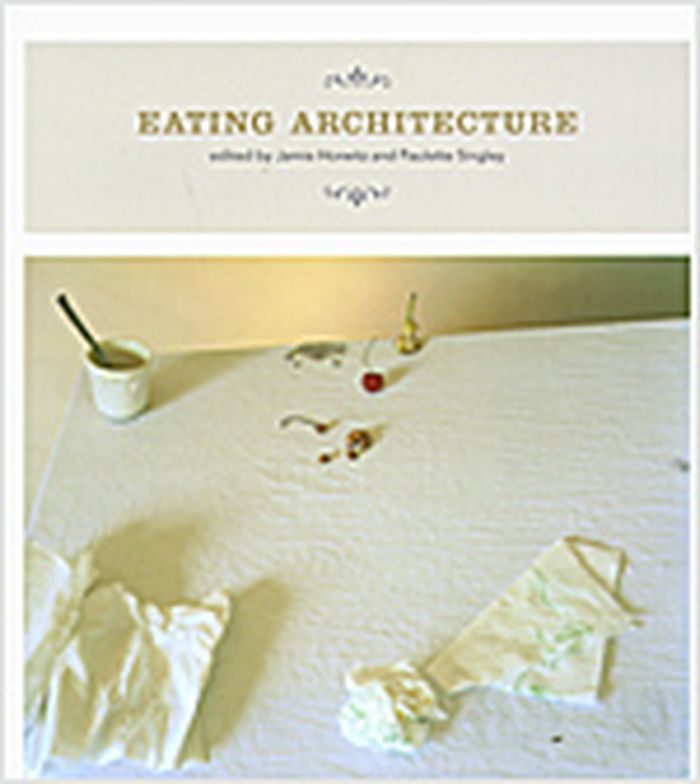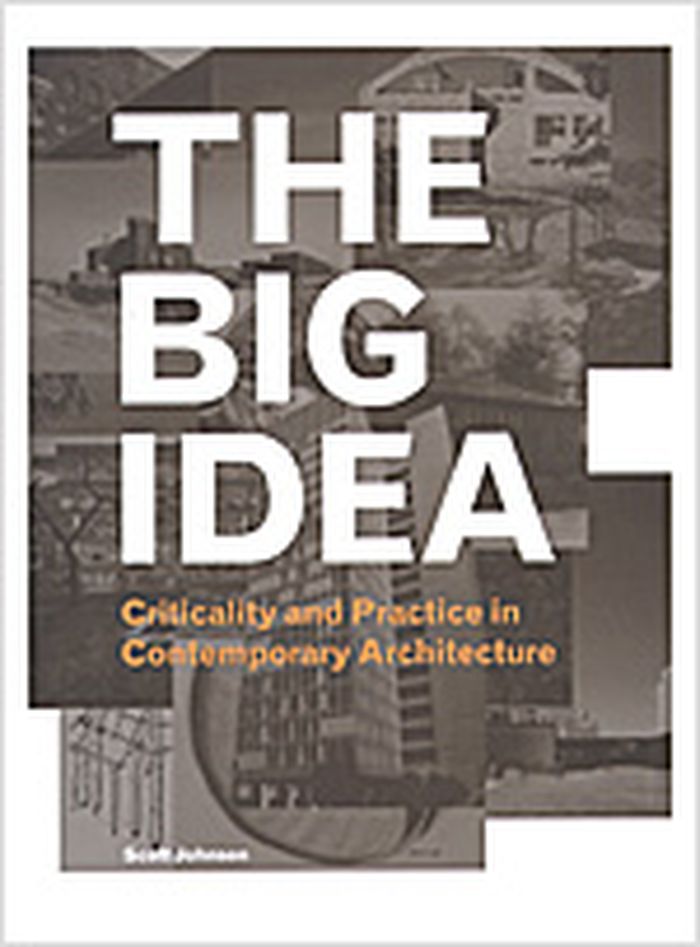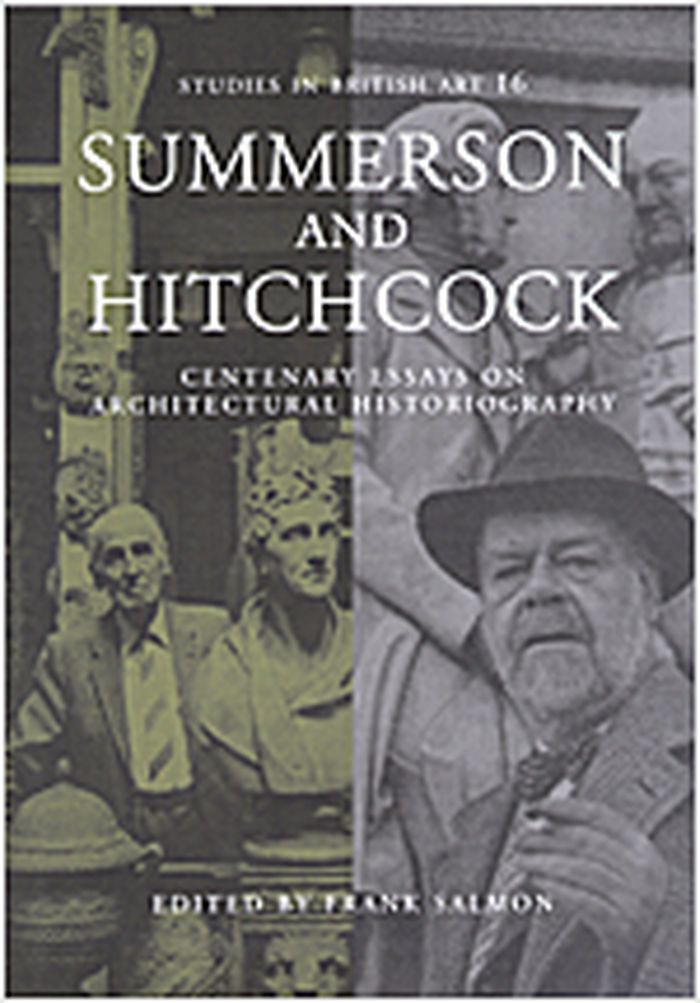$23.95
(disponible sur commande)
Résumé:
At the dawn of the twenty-first century, architecture is in a state of crisis. Numbed by an ugly and shoddily constructed built environment and outraged by the cost of high-profile design projects, the public has become disinterested in and contemptuous of architecture as both a profession and an art. At the same time, some of our most creative designers have isolated(...)
In the scheme of things : alternative thinking on the practice of architecture
Actions:
Prix:
$23.95
(disponible sur commande)
Résumé:
At the dawn of the twenty-first century, architecture is in a state of crisis. Numbed by an ugly and shoddily constructed built environment and outraged by the cost of high-profile design projects, the public has become disinterested in and contemptuous of architecture as both a profession and an art. At the same time, some of our most creative designers have isolated themselves from the tastes and needs of mainstream society, reflecting a similar malaise found in design and architecture schools around the country. In this troubling climate, Thomas R. Fisher contends that the purpose and prospects of architectural practice must be reconsidered and reenergized. "In the Scheme of Things" looks at architecture's need to respond creatively and meaningfully to the extraordinary changes affecting the profession now, changes that include the global economy, the advent of computer-aided design, and the growing disconnection between design schools, architectural practice, and the public. In each of the twelve essays that comprise this timely volume, Fisher addresses issues of vital concern to architects and students, offering hard-hitting criticism and proposing innovative and practical ideas for reform at the level of both the individual practitioner and the profession as a whole. Through his thoughtful and nuanced consideration of architecture's ideological foundations and its relationship to ecology, politics, and technology, as well as his subtle understanding of the architect's interior life, Fisher challenges the demoralized design community to recapture its historical role as steward and visionary of the public realm.
Théorie de l’architecture
livres
Leçons d'architecture
$49.95
(disponible sur commande)
Résumé:
Ce livre, immédiatement admis au rang de classique, a connu nombre de réimpressions. Hertzberger expose le contexte professionnel et les idées sous-tendant son oeuvre. En regroupant textes et illustrations par thèmes, il réussit à transformer sa vaste expérience en une théorie passionnante, qui offre au lecteur, plutôt que des règles et des recettes, une source(...)
Leçons d'architecture
Actions:
Prix:
$49.95
(disponible sur commande)
Résumé:
Ce livre, immédiatement admis au rang de classique, a connu nombre de réimpressions. Hertzberger expose le contexte professionnel et les idées sous-tendant son oeuvre. En regroupant textes et illustrations par thèmes, il réussit à transformer sa vaste expérience en une théorie passionnante, qui offre au lecteur, plutôt que des règles et des recettes, une source d'inspiration et de connaissance.
livres
juin 2008
Théorie de l’architecture
$42.95
(disponible sur commande)
Résumé:
Ce livre est la première recherche rigoureuse consacrée en France à l'oeuvre de Giuseppe Terragni. D'édifice en édifice, de Côme à Rome, il nous convie à regarder cette architecture de plus près, en portant la plus grande attention à sa constitution. Il nous propose aussi d'interroger la position moderne contemporaine de Terragni, éclairée par les écrits du Gruppo 7.
L'invention d'un espace : Giuseppe Terragni
Actions:
Prix:
$42.95
(disponible sur commande)
Résumé:
Ce livre est la première recherche rigoureuse consacrée en France à l'oeuvre de Giuseppe Terragni. D'édifice en édifice, de Côme à Rome, il nous convie à regarder cette architecture de plus près, en portant la plus grande attention à sa constitution. Il nous propose aussi d'interroger la position moderne contemporaine de Terragni, éclairée par les écrits du Gruppo 7.
Théorie de l’architecture
Bad modernisms
$31.50
(disponible sur commande)
Résumé:
At the dawn of the twenty-first century, poets and architects, designers and critics, teachers and artists are rediscovering the virtues of the previous century's most vibrant cultural constellation. Yet this widespread embrace raises questions about modernism's relation to its own success. Modernism's “badness” — its emphasis on outrageous behavior, its elevation of(...)
Bad modernisms
Actions:
Prix:
$31.50
(disponible sur commande)
Résumé:
At the dawn of the twenty-first century, poets and architects, designers and critics, teachers and artists are rediscovering the virtues of the previous century's most vibrant cultural constellation. Yet this widespread embrace raises questions about modernism's relation to its own success. Modernism's “badness” — its emphasis on outrageous behavior, its elevation of negativity, its refusal to be condoned —seems essential to its power. But once modernism is accepted as “good” or valuable (as a great deal of modernist art now is), its status as a subversive aesthetic intervention seems undermined. The contributors to "Bad modernisms" tease out the contradictions in modernism's commitment to badness "Bad modernisms" thus builds on and extends the “new modernist studies,” recent work marked by the application of diverse methods and attention to texts and artists not usually labeled as modernist. In this collection, these developments are exemplified by essays ranging from a reading of dandyism in 1920s Harlem as a performance of a “bad” black modernist imaginary to a consideration of Filipino American modernism in the context of anticolonialism. The contributors reconsider familiar figures—such as Virginia Woolf, D. H. Lawrence, Josef von Sternberg, Ludwig Wittgenstein, W. H. Auden, and Wyndham Lewis—and bring to light the work of lesser-known artists, including the writer Carlos Bulosan and the experimental filmmaker Len Lye. Examining cultural artifacts ranging from novels to manifestos, from philosophical treatises to movie musicals, and from anthropological essays to advertising campaigns, these essays signal the capaciousness and energy galvanizing the new modernist studies.
Théorie de l’architecture
Architecture interdite
$41.95
(disponible sur commande)
Résumé:
L'auteur présente certaines préoccupations actuelles : comment donner une réponse architecturale à la poussée démographique sans polluer les paysages ? Comment garder l'essentiel de l'acquis moderne tout en l'insérant dans le tissu traditionnel ? À ces questions, l'auteur répond par des propositions testées sur le terrain, c'est-à-dire le plan de masse de Douvaine, la(...)
Architecture interdite
Actions:
Prix:
$41.95
(disponible sur commande)
Résumé:
L'auteur présente certaines préoccupations actuelles : comment donner une réponse architecturale à la poussée démographique sans polluer les paysages ? Comment garder l'essentiel de l'acquis moderne tout en l'insérant dans le tissu traditionnel ? À ces questions, l'auteur répond par des propositions testées sur le terrain, c'est-à-dire le plan de masse de Douvaine, la restructuration de Val d'Isère, celle de Saint-Jean-de-Maurienne.
Théorie de l’architecture
$36.50
(disponible sur commande)
Résumé:
he journey to the ‘place', the beginning and the end of a building, the source of inspiration or failure, sometimes a backdrop, other times a determinant, took this publication through three different continents: from Austria via London, Chile, Finland, Portugal to Australia, through landscapes and cities, societies and cultures, thoughts, motifs and underlying conditions(...)
Théorie de l’architecture
décembre 2005, Graz
Ort : ort means place, site, location and more
Actions:
Prix:
$36.50
(disponible sur commande)
Résumé:
he journey to the ‘place', the beginning and the end of a building, the source of inspiration or failure, sometimes a backdrop, other times a determinant, took this publication through three different continents: from Austria via London, Chile, Finland, Portugal to Australia, through landscapes and cities, societies and cultures, thoughts, motifs and underlying conditions of architectural agency. The result is a diverse and intriguing collection of architectural writings and investigations on ‘place' from 16 contributors including: Adam Caruso, Sean Godsell, Erich Prödl and Brian Carter.
Théorie de l’architecture
Eating architecture
$39.95
(disponible sur commande)
Résumé:
The contributors to this collection of essays explore the relationship between food and architecture, asking what can be learned by examining the (often metaphorical) intersection of the preparation of meals and the production of space. In a culture that includes the Food Channel and the knife-juggling chefs of Benihana, food has become not only an obsession but an(...)
avril 2006
Eating architecture
Actions:
Prix:
$39.95
(disponible sur commande)
Résumé:
The contributors to this collection of essays explore the relationship between food and architecture, asking what can be learned by examining the (often metaphorical) intersection of the preparation of meals and the production of space. In a culture that includes the Food Channel and the knife-juggling chefs of Benihana, food has become not only an obsession but an alternative art form. The nineteen essays and "Gallery of Recipes" in "Eating architecture" seize this moment to investigate how art and architecture engage issues of identity, ideology, conviviality, memory, and loss that cookery evokes. The essays are organized into four sections that lead the reader from the landscape to the kitchen, the table, and finally the mouth. The essays in "Place settings" examine the relationships between food and location that arise in culinary colonialism and the global economy of tourism. "Philosophy in the kitchen" traces the routines that create a site for aesthetic experimentation, including an examination of gingerbread houses as art, food, and architectural space. The essays in "Table rules" consider the spatial and performative aspects of eating and the ways in which shared meals are among the most perishable and preserved cultural artifacts. Finally, "Embodied taste" considers the sensual apprehension of food and what it means to consume a work of art. The "Gallery of recipes" contains images by contemporary architects on the subject of eating architecture.
Prosthetic gods
$24.95
(disponible sur commande)
Résumé:
How to imagine not only a new art or architecture but a new self or subject equal to them? In "Prosthetic gods", Hal Foster explores this question through the works and writings of such key modernists as Gauguin and Picasso, F. T. Marinetti and Wyndham Lewis, Adolf Loos and Max Ernst. These diverse figures were all fascinated by fictions of origin, either primordial and(...)
Prosthetic gods
Actions:
Prix:
$24.95
(disponible sur commande)
Résumé:
How to imagine not only a new art or architecture but a new self or subject equal to them? In "Prosthetic gods", Hal Foster explores this question through the works and writings of such key modernists as Gauguin and Picasso, F. T. Marinetti and Wyndham Lewis, Adolf Loos and Max Ernst. These diverse figures were all fascinated by fictions of origin, either primordial and tribal or futuristic and technological. In this way, Foster argues, two forms came to dominate modernist art above all others: the primitive and the machine. Foster begins with the primitivist fantasies of Gauguin and Picasso, which he examines through the Freudian lens of the primal scene. He then turns to the purist obsessions of the Viennese architect Loos, who abhorred all things primitive. Next Foster considers the technophilic subjects propounded by the futurist Marinetti and the vorticist Lewis. These "new egos" are further contrasted with the "bachelor machines" proposed by the dadaist Ernst. Foster also explores extrapolations from the art of the mentally ill in the aesthetic models of Ernst, Paul Klee, and Jean Dubuffet, as well as manipulations of the female body in the surrealist photography of Brassai, Man Ray, and Hans Bellmer. Finally, he examines the impulse to dissolve the conventions of art altogether in the drip paintings of Jackson Pollock, the scatter pieces of Robert Morris, and the earthworks of Robert Smithson, and traces the evocation of lost objects of desire in sculptural work from Marcel Duchamp and Alberto Giacometti to Robert Gober. Although its title is drawn from Freud, "Prosthetic gods" does not impose psychoanalytic theory on modernist art; rather, it sets the two into critical relation and scans the greater historical field that they share.
Théorie de l’architecture
$45.50
(disponible sur commande)
Résumé:
In this memoir, Johnson shares his personal experiences as a designer and considers the relationship between practice and theory over the last forty years of American architecture. From his childhood days in California's Salinas Valley, to his tenure with legendary architect Philip Johnson, to his time with Skidmore Owings – Merrill, to the formation of his own firm and(...)
The big idea : criticality and practice in contemporary architecture
Actions:
Prix:
$45.50
(disponible sur commande)
Résumé:
In this memoir, Johnson shares his personal experiences as a designer and considers the relationship between practice and theory over the last forty years of American architecture. From his childhood days in California's Salinas Valley, to his tenure with legendary architect Philip Johnson, to his time with Skidmore Owings – Merrill, to the formation of his own firm and its rise toward the top of the architectural firmament, Johnson's insight makes for a discussion of each of the major movements that have characterized the world of architecture since Modernism in Los Angeles. Foreword by Dennis P. Doordan.
Théorie de l’architecture
$81.50
(disponible en magasin)
Résumé:
In this volume, twenty scholars explore the work of two of the twentieth century’s greatest architectural historians: the American Henry-Russell Hitchcock (1903–1987) and the Englishman Sir John Summerson (1904–1992). Both men undertook architectural training and became key polemical figures in the establishment of Modernism in the 1930s. After the war, and especially in(...)
Summersopn and Hitchcock : centenary essays on architectural historiography
Actions:
Prix:
$81.50
(disponible en magasin)
Résumé:
In this volume, twenty scholars explore the work of two of the twentieth century’s greatest architectural historians: the American Henry-Russell Hitchcock (1903–1987) and the Englishman Sir John Summerson (1904–1992). Both men undertook architectural training and became key polemical figures in the establishment of Modernism in the 1930s. After the war, and especially in the 1950s, both turned more exclusively to historical research and writing. While their areas of interest overlapped, their approaches greatly differed. The contributors to the book investigate the work and methodologies of Summerson and Hitchcock, from their interests in the Northern European (as opposed to Italian) Renaissance, through their studies of the nineteenth century as a precursor to their own times, to their involvement in contemporary issues of design and conservation. The book enhances our understanding of the influences that shaped these two important figures and of the place of architecture within the social and cultural environment.
Théorie de l’architecture
